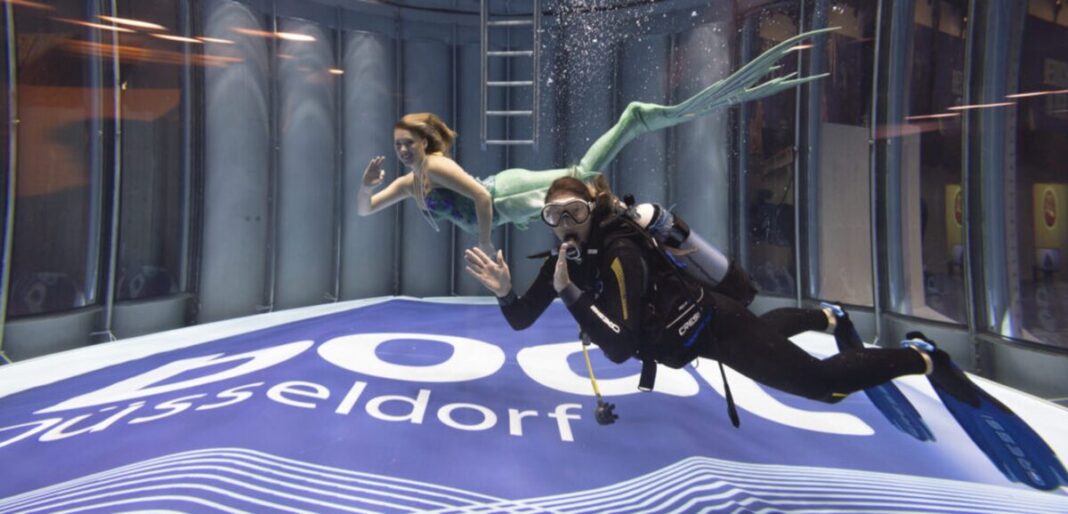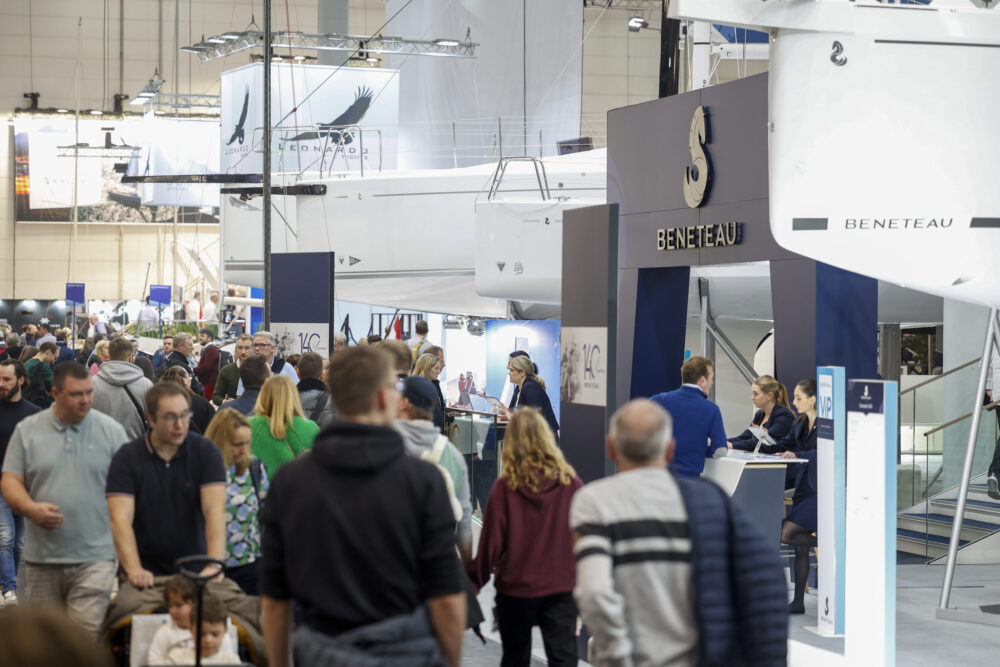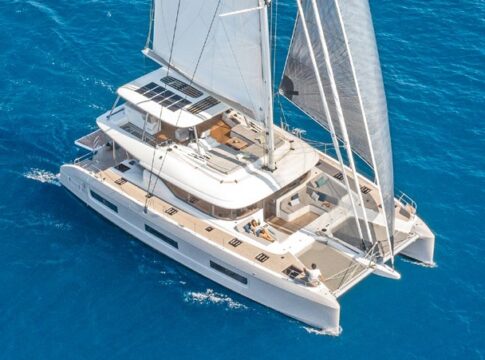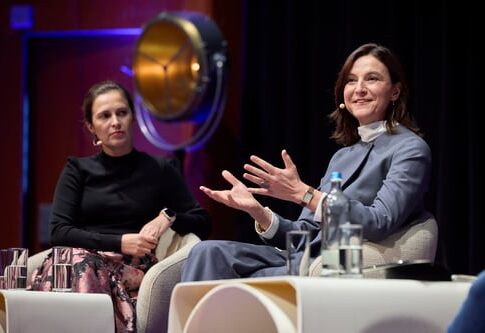Since time immemorial, the sea has been a place of longing that inspires thoughts, gives rise to desires and proves to be the basis for ideas.
It is no wonder that exploring the underwater world is one of humanity’s oldest dreams. Today, modern diving offers us all the perfect opportunities to experience this fascination for ourselves.
In our modern times, no other leisure activity offers a more intense experience of nature than diving. The direct feeling of the element of water, combined with the proximity to an otherwise invisible nature with a wide variety of life forms, makes recreational or sports diving unique.
Archaeological finds prove that as early as around 6000 years ago, free divers plunged into the waves to bring up shells and sponges.
So today’s free divers are following an ancient tradition – albeit without the intention of bringing anything out of the sea, but with equipment specially designed for their sport.
Modern scuba divers need a little more technology – but they can stay underwater longer. The best thing about both variants: diving is a leisure activity for all ages.
First steps and equipment
To get started, you need a diving mask (also commonly known as diving goggles), a snorkel and a pair of fins. These three components – also known as ABC equipment – are essential for every aquanaut, whether they want to try apnoea or free diving or scuba diving.
While it is important that the mask and fins fit well, the most important thing with a snorkel is that it is not too long for safety reasons.
For beginners, the fins should not be too hard at the beginning of the dive. As your fin kicks improve over time, a model with a harder fin blade is not a bad idea. This also makes currents easier to control.
Fins for freediving are longer than snorkelling fins. For scuba diving, the blades are a bit sturdier; these fins are often available either as a barefoot version with a shoe part or as open fins with a heel strap for cold water diving.
If you know that snorkelling or diving is definitely your thing, you are well equipped with your own ABC equipment. However, if you want to enjoy the water for more than just a few minutes, you should also consider buying a wetsuit. These are available with long sleeves and legs, as well as short sleeves and legs (shorties). The material not only protects you from cooling down, but also from the sun.
For scuba divers, the choice of diving suit depends on the water temperature and your personal sensitivity to the cold. In tropical regions, suits made of 3-5 mm thick neoprene are usually sufficient. For cold-water diving, semi-dry suits are recommended – they allow hardly any or only a little water to reach the body. These also include a hood and gloves. Because suits need to fit well for each individual, experienced divers prefer to have their own.
A regulator for a constant air supply and a buoyancy control device to control ascent and descent can be rented at any well-stocked dive centre. If diving becomes a passion, it is worth buying these items of equipment.
The same applies to dive computers. These have largely replaced depth gauges and tables and make diving even safer with their accurate calculations and information.
In Halls 11 and 12 of boot Düsseldorf, the stands of the most well-known manufacturers of diving equipment provide expert information on everything that is important for free divers and scuba divers.
In addition, the two exhibition halls also feature stands of specialist diving retailers. If you would like to browse through the suppliers before visiting the trade fair, simply take a look at the exhibitor and product database at www.boot.com.
In principle, however, all the necessary equipment can be rented from a well-equipped diving center.
The diving course
Diving is one of the safest sports around. Knowledge of the correct behavior under water is the basis for this. While simple, spontaneous snorkelling and observing the underwater world from the surface is possible at any time, there are special courses for ambitious free divers.
However, these are not about how to break depth records as quickly as possible. Rather, future free divers learn how to improve their breathing technique and optimize their movements when diving and underwater with the help of special exercises.
Without a diving certificate, you cannot take a diving bottle below the surface of either a local lake or the sea for the above-mentioned safety reasons. However, the diving course is by no means a course of study with a doctoral thesis, but is quite easy to complete. After a small medical check, it really starts.
If you are not yet convinced that diving is really for you, you can find out with a diving center during a taster dive even before the health check.
There are a number of training organizations worldwide. The good thing is that almost all of them internationally recognize each other’s diving certificates without reservation. In Düsseldorf, the best-known ones have been around for years.
Among them is the German Diving Association (VDST), in which the German diving clubs are organized. Their members can be trained in the clubs and can also find commercial diving schools affiliated with the VDST or the international recreational diving umbrella organization CMAS in many parts of the world.
Founded in the USA in 1966, the Professional Association of Diving Instructors (PADI) is considered the world’s largest commercial diving training organization. Scuba Schools International (SSI), which was also founded in the United States four years later, is also represented worldwide today.
If you are in good health, underwater fun is something for almost every age. For those a little further along in life, personal fitness then sets the framework.
Children’s diving
CMAS and thus also the VDST offer children from the age of eight a children’s diving course. This is also the age required by PADI, while SSI children’s diving courses are possible from the age of ten. Many diving equipment manufacturers have also adapted to the young aquanauts and offer special children’s diving equipment in their range.
Kids can also gain their first underwater experience in the diving pool in Hall 12 at boot 2025 during a taster dive.
Into the water
So, the only question that remains is where the diving course should take place. As a member of a club, you will be able to complete the first exercises in a pool or indoor swimming pool before moving on to further practice and the final practical exam in a lake or the sea, depending on the options.
The advantage of taking a diving course at a commercial diving school is that it has a fixed schedule. As a rule, you can complete the course and exam at a base during your holiday within a week.
Those who take the diving licence at the seaside naturally have the advantage of being in the ocean habitat quite soon or even from the start.
In both cases, the whole world is open to the new Neptune disciples after passing the course for fascinating diving adventures.
Travel tips for beginners
Around 71 per cent of our planet is covered by water. However, the seas differ. The Mediterranean, for example, has a high biodiversity – there are many different species. There are no reef-building corals there, but colorful fan corals in many regions. One advantage of this sea is that the diving areas in Croatia, Italy, southern France and on the Spanish Costa Brava are also easily accessible by car.
The northernmost sea with tropical coral is the Red Sea. There are numerous diving schools and bases, especially along the Egyptian coast between El Gouna, north of Hurghada, and well into the south at Hamata. In the Gulf of Aqaba, there are many diving centers on the Sinai coast in Sharm el Sheikh and Dahab, Egypt. The Jordanian diving area opposite Aqaba is no less famous. In both destinations, you can dive from the shore or from a boat.
If you want to spend your diving holiday on a small tropical island, you will feel at home in the Maldives in the Indian Ocean, for example. Mauritius is considerably larger; there are also wonderful diving spots there.
And if that’s not far enough away from Europe for you, the Philippines and Indonesia are island nations known to divers around the world for their diverse marine life. The same applies to the diving waters of Thailand, where diving is usually done from a boat.
There is also a wide range of diving cruises in tropical waters, but you should have some diving experience after your first course.
For all readers who are now curious about experiencing the underwater world: From 18 to 26 January, boot Düsseldorf offers the perfect opportunity to get to the bottom of the fascination of diving and to get to know destinations all over the world in Hall 12 and the adjoining Destination Seaside in Hall 13.
The world’s largest yacht and water sports fair
With more than 200,000 visitors from over 100 countries and 1,500 exhibitors on 220,000 square meters in Halls 1 to 17, boot Düsseldorf from 18 to 26 January 2025 is the world’s largest yacht and water sports fair. Both sailors and motor boaters will find a wide variety of boats, dinghies, superboats or luxury yachts.
The popular water sports of diving, surfing, kite surfing, stand up paddling, skimboarding or canoeing are available at boot in all facets and with the appropriate equipment. Attractive stage programs with the stars of the scene, the latest trends and a high-caliber mix of workshops and hands-on activities, both for leisure sports enthusiasts and experts, make the fair unique worldwide.
But marine conservation and innovative, sustainable technologies are also in focus at boot 2025. In cooperation with the European Boating Industry (EBI), the blue innovation dock will offer a unique dialogue format with political, economic, technological and media expertise in Hall 10. In addition, two lighthouses for ocean protection will again be on board:
The prestigious “ocean tribute” award with partners Prince Albert II. Foundation and German Ocean Foundation as well as the “love your ocean” campaign with its stand in Hall 11.







